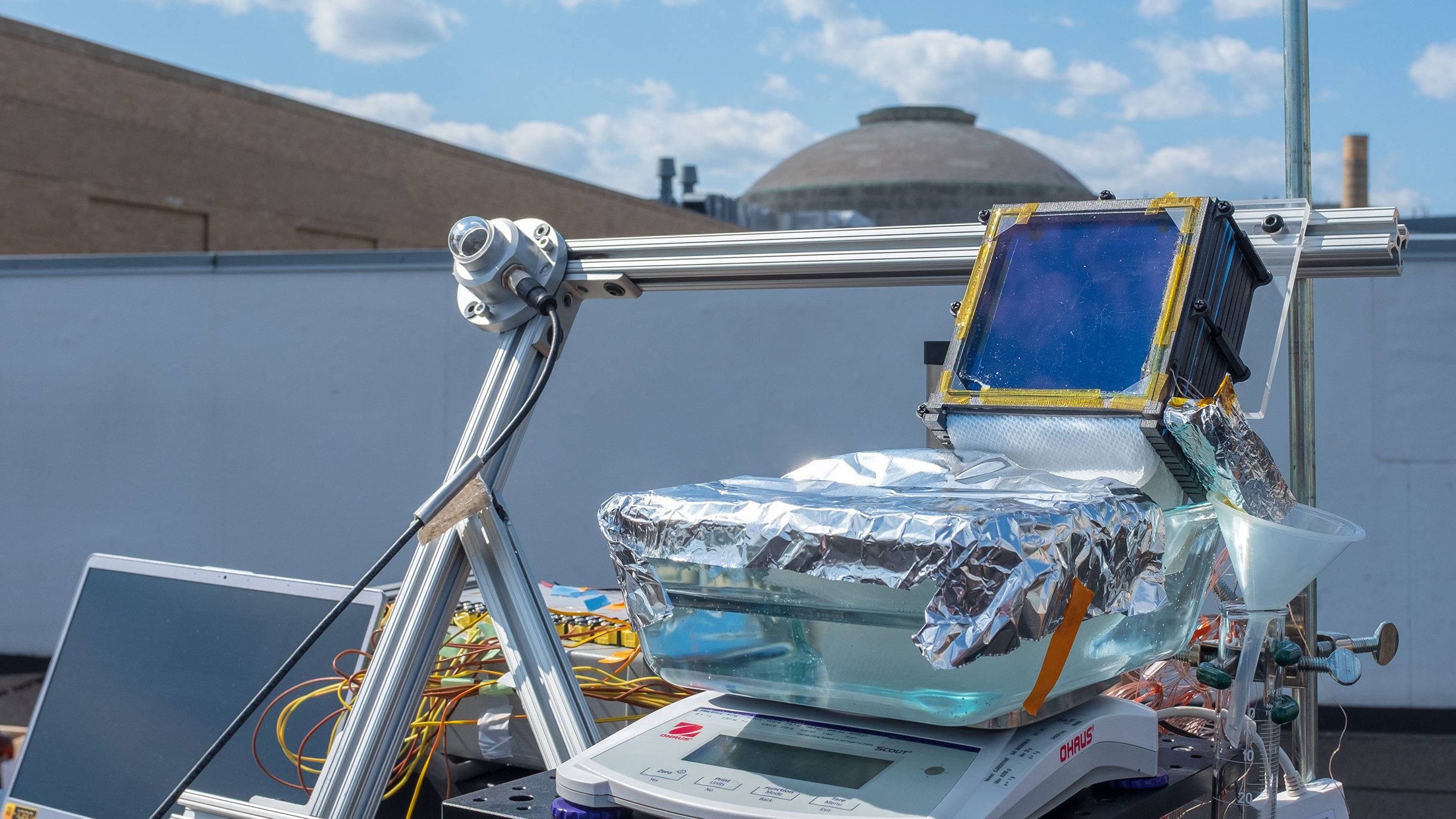A completely passive solar powered desalination system developed by researchers at MIT and in China could provide more than 1.5 gallons of fresh drinking water per hour for every square meter of solar collecting area. Such systems could potentially serve off-grid arid coastal areas to provide a low-cost water source.
The system uses multiple layers of flat solar evaporators and condensers, topped with transparent aerogel insulation. It then desalinates the water in stages, with each stage harnessing heat released by the previous stage–heat that would usually be wasted. In this way, the team’s demonstration device can achieve a world record efficiency level in converting the energy of sunlight into the energy needed to induce water evaporation.
The device is essentially a multi-layer solar still, with a series of evaporating and condensing components like those used to distill liquor. Its flat panels absorb heat and then transfer it to a layer of water, which begins to evaporate. The vapor then condenses on the next panel and gets collected, while the heat from the vapor condensation gets passed to the next layer.
Don’t settle for half the story.
Get paywall-free access to technology news for the here and now.
